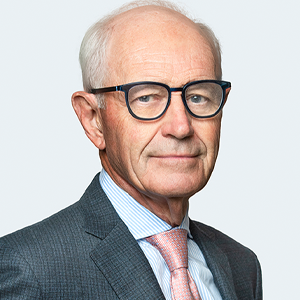Hollow Victory for Ecuadorian Villagers?
- Conflicts of Law and Enforcement of Foreign Judgments
- |
- Corporate Litigation
- |
- Enforcement of Foreign Judgments
Could Chevron’s Canadian subsidiary be liable for environmental damages awarded against Chevron, the parent company, in Ecuador? This question remains unanswered despite the recent release of a much-anticipated Supreme Court of Canada decision. The Supreme Court decision is important in that it clarifies the law on when Canadian courts will agree to hear lawsuits for the recognition and enforcement of foreign judgments. However, several of the most interesting legal issues, which could have extraordinary implications for corporate structuring of multi-national companies, remain unaddressed.
Environmental Destruction in Ecuador
The Lago Agrio region of the Ecuadorian Amazon is internationally known for the serious ecological problems caused by oil field development in the area, including water pollution, soil contamination, deforestation, and cultural upheaval. The plaintiffs, representing approximately 30,000 Ecuadorian villagers, allege that these problems were caused by the oil extraction activities conducted by Texaco (now indirectly owned by Chevron) from 1964 to 1992. The cessation of Texaco’s extraction activities marked the beginning of a protracted international legal battle that continues to this day, more than twenty years later.
Hard-Fought International Legal Battle
In 1993, the plaintiffs sued Texaco in New York. In 2002, Texaco agreed to submit to the jurisdiction of Ecuadorian courts in exchange for a dismissal of the action in New York. The next year, the plaintiffs sued Chevron in Ecuador. Justice Zambrano of the court of first instance ruled in favour of the plaintiffs in 2011, awarding US$17.2 billion in environmental and punitive damages. This decision was upheld on appeal in 2012, but the award was reduced on further appeal to US$9.51 billion in 2013. Chevron does not hold any assets in Ecuador to satisfy this judgment.
In 2009, Chevron commenced arbitration proceedings under the US-Ecuador bilateral investment treaty, alleging that various organs of the Ecuadorian state had directly assisted the plaintiffs in attempting to illegitimately extract money from Chevron. In 2011 and subsequently, the arbitration panel issued interim decisions requiring Ecuador to take all measures at its disposal to suspend the enforcement or recognition of any judgments against Chevron both within and outside of Ecuador until a final decision could be made in the arbitration proceedings.
Meanwhile, in New York, Chevron sued the plaintiffs’ American lawyer as well as two of the plaintiffs alleging that the lawyer had bribed Justice Zambrano to render a ghost-written decision. In 2014, the year after the final Ecuadorian judgment was released, a New York court held that the Ecuadorian judgment had resulted from fraud committed by the plaintiffs’ American lawyer and others on Ecuadorian courts.
In 2012, in an effort to make Chevron pay the amount then owed under the Ecuadorian judgment, the plaintiffs started a lawsuit for its recognition and enforcement in Ontario against Chevron and Chevron Canada, a seventh-level, wholly-owned Canadian subsidiary of Chevron. Both Chevron and Chevron Canada denied that Ontario courts had jurisdiction to hear the action.
Narrow Supreme Court of Canada Decision
The only issue before the Supreme Court of Canada in Chevron Corp v Yaiguaje was whether Ontario courts had jurisdiction to hear the recognition and enforcement action. The Supreme Court concluded that in an action to recognize and enforce a foreign judgment, jurisdiction is established so long as the foreign court had legitimate jurisdiction over the underlying lawsuit. Foreign courts have such jurisdiction if the parties were present in the country, if the parties consented to the jurisdiction, or if there was a real and substantial connection between the circumstances of the underlying lawsuit and the foreign court.
The Supreme Court held that although a foreign judgment debtor does not need to have assets in Canada for Canadian courts to have jurisdiction over a recognition and enforcement action, a lack of assets could influence the appropriateness of the choice of forum. The Supreme Court therefore appears to leave room for Chevron to argue that Canada is forum non conveniens (that is, not a convenient jurisdiction) for a recognition and enforcement action.
At the same time, the Supreme Court recognized that globalization and technological developments have meant that assets can move (almost) freely between countries. The issue of whether assets exist in the jurisdiction in which recognition and enforcement is sought is therefore less relevant today than in earlier times. In fact, in some instances, the judgment debtor may not be in control of the timing or location of the receipt of an asset due to it. For example, it may receive assets in one jurisdiction over another due to an existing contract. Allowing an action for recognition and enforcement to be heard even when no assets exist allows judgment creditors to make full use of the enforcement mechanisms, such as garnishment, available in the enforcing jurisdiction.
Therefore, although the Supreme Court leaves room for a forum non conveniens argument by Chevron, it also appears to be discouraging Chevron from raising this argument only on the basis that it holds no assets in Canada.
Unanswered Questions
To understand what was not decided by the Supreme Court, it is instructive to consider the holdings of the lower courts in Ontario.
In the court of first instance, Justice Brown decided that Ontario courts had jurisdiction over both Chevron and Chevron Canada. However, he took his own initiative and chose to stay the action because it would be a waste of judicial resources to allow the action to proceed where there was little chance of the plaintiffs actually recovering any money or assets. He reached this conclusion for both Chevron and Chevron Canada, but on separate bases.
Chevron has no Assets in Ontario
Chevron has never owned any assets in Ontario in the past, does not own assets in Ontario currently, and has submitted that it does not intend to own any assets in Ontario in the future. Justice Brown accepted that Chevron had obviously structured its corporate affairs deliberately in a way so as to not own assets in Ontario. Chevron also does not conduct any business in Ontario on its own. Therefore, Justice Brown held that there was no reasonable basis on which to conclude that Chevron would ever own assets in Ontario that could be used to satisfy the Ecuadorian judgment.
Not Enough to Pierce the Corporate Veil
The plaintiffs had argued that Chevron “beneficially owned” the assets of Chevron Canada, and so Chevron Canada’s assets should be available to the plaintiffs to satisfy the judgment debt. Justice Brown did not agree.
On their face, Chevron Canada’s shares are held by a different Chevron entity entirely. Chevron does not own any shares in Chevron Canada. Furthermore, under Canadian law, a shareholder in a corporation does not possess a legal or equitable interest in the assets of the company while the company is a going concern.
Justice Brown also addressed Canadian law on piercing the corporate veil –that is, when a corporation should not be regarded as an entity independent of its owner(s). He emphasized that the fact that a parent company operates a number of world-wide corporations as an integrated economic unit is not sufficient to hold that the corporations are not separate legal entities. Ontario courts have not recognized a “group enterprise theory” of corporate liability absent some compelling reason.
The Plot Thickens
The victory for the plaintiffs in the Supreme Court of Canada is a narrow one, but it has at least forced Chevron to file a Statement of Defence in Ontario courts. A motion for summary judgment is now scheduled for March, 2016.
Chevron’s Statement of Defence relies heavily on the legal distinction between Chevron and Chevron Canada, but it also raises other issues.
Impeachment
It was only after Justice Brown’s decision was released that it was held in New York that the Ecuadorian judgment was obtained by fraudulent means. Therefore, although Justice Brown did not canvass the issue of fraud, it remains open to Chevron and Chevron Canada to impeach the Ecuadorian judgment, which would constitute a complete defence to the recognition and enforcement action.
Impeachment of the judgment would require the Chevron entities to show either that a) the judgment was obtained by fraud extrinsic to the record before the foreign court; b) the proceedings were conducted in a manner contrary to natural justice; or c) recognition and enforcement would be contrary to public policy.
Predictably, the Chevron entities have used the New York holding regarding fraud to bolster their argument that the Ecuadorian proceedings were conducted contrary to natural justice.
Texaco has Already Paid for Remediation Efforts
In the mid- to late-1990s, Texaco agreed with Ecuador to pay for remediation efforts in exchange for releases from several types of claims. Therefore, Chevron argues that it would be contrary to natural justice to allow the plaintiffs to bring a claim for which Texaco had already obtained releases. The matter is complicated by the fact that the Ecuadorian action was initiated under environmental legislation that was put in place after Texaco signed these releases, and the legislation has retroactive effect in Ecuador.
Saga Continues
In response to Chevron’s allegations, the plaintiffs argue that the Ecuadorian judgment was reasonable and that Chevron was provided with a fair chance to present its case in Ecuador, including on appeal of the allegedly fraudulent judgment of Justice Zambrano. Having lost in Ecuador, the plaintiffs argue that Chevron should not be allowed to re-litigate those issues in Canada.
The decision in the motion for summary judgment will have to grapple with these difficult questions, which go to the heart of both corporate law and international law. In any case, the decision will likely be appealed. The battle is far from over.














